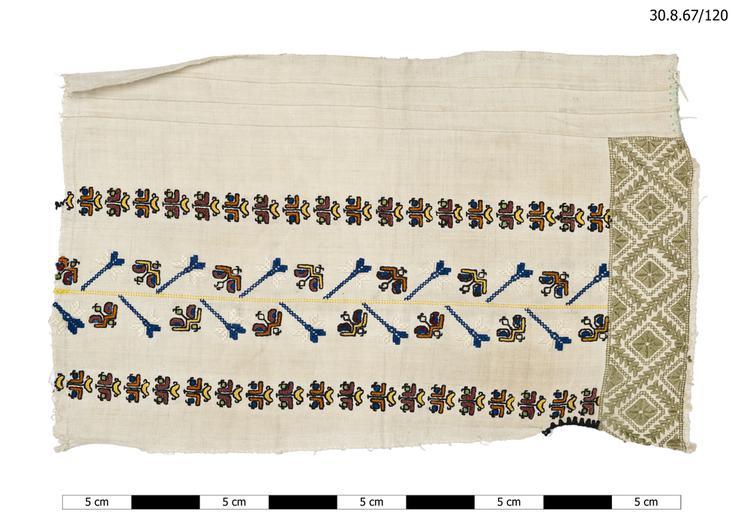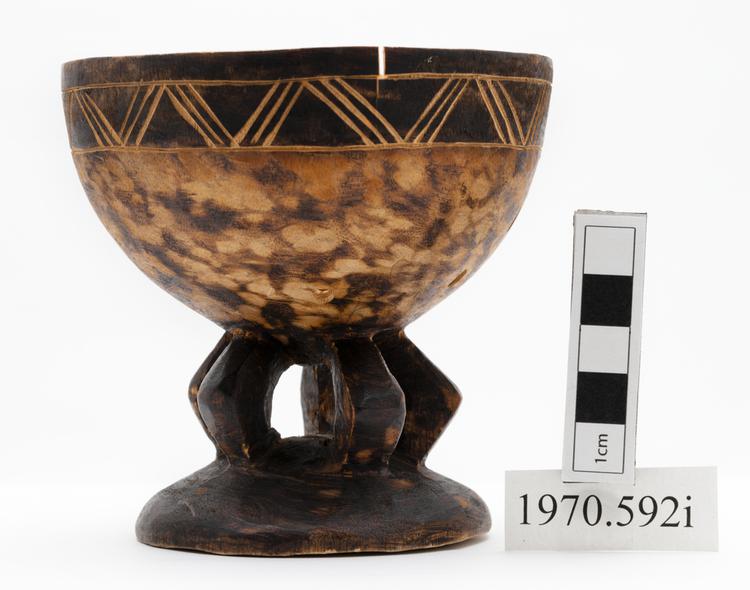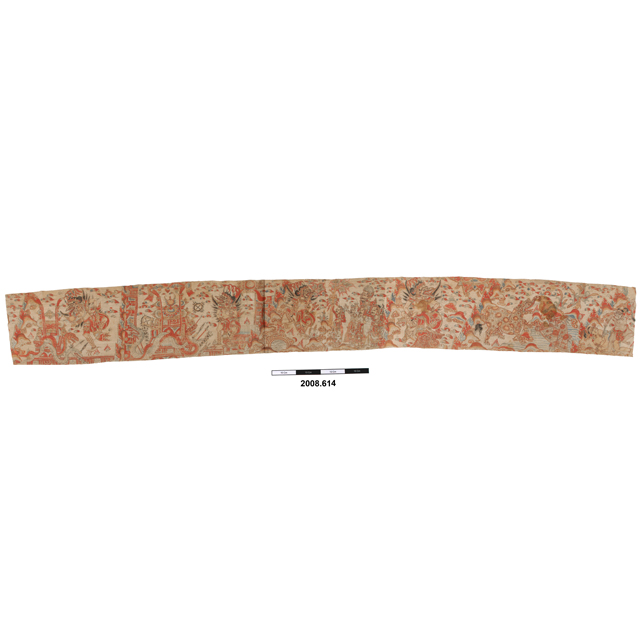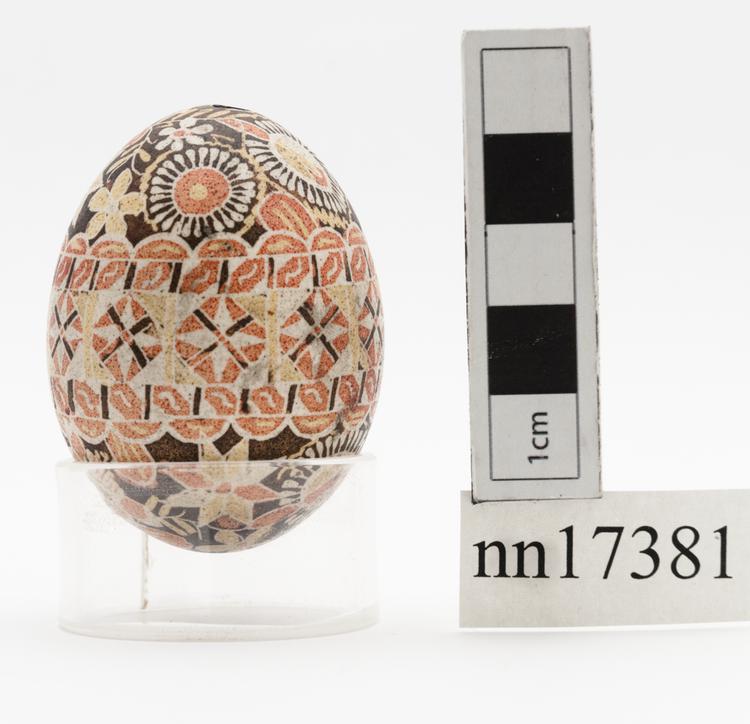






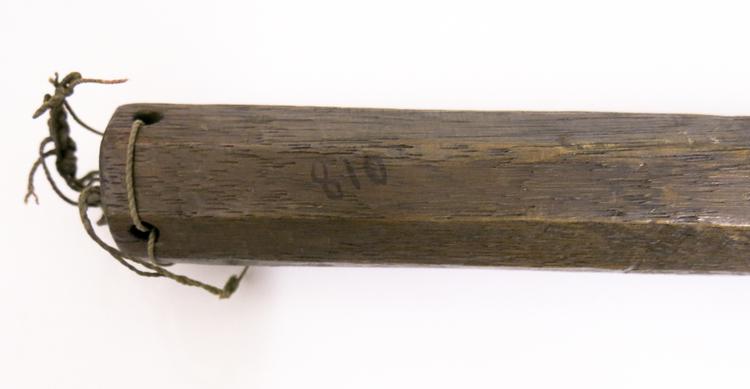
Time recording stick (wood, iron). (810- but not a HM no.). Tibet? Clock stick or staff of light brown wood with a socketed and pointed iron tip painted black. The octagonal sides of the staff are carved with characters (NOT Tibetan) in panels at intervals towards the top, which is pierced in four planes and then in eight planes lower down. A tie on the label says “972 Asia Tibet”; “810” is written on the staff. Roth: Not Tibetan.
A time-staff very similar to 972 is held in the John Gershom Parkington Memorial Collection in Bury St Edmonds. The Parkington Collection staff is the subject of an article by H J J Winter, published in Physis: Rivista Internationale De Storia Della Scienza (1964), (please see linked publications). In his article Winter suggests that staffs like the one held in the Parkington Collection were used in Nepal and the Himalayan foothills during the 19th century, but he struggles to find earlier antecedents for these staffs in the same region. Time-staffs would have been operated as follows: the spiked end was first stuck in the ground and the facet of the staff bearing the name of the current month turned towards the sun. A gnomon would then be inserted into its socket at the head of the facet and the shadow cast by it would stop at the carved number which indicated the time of day. It is not clear from Winter’s article who might have used the staffs. The Parkington Collection staff is described as being used by a ‘Tibetan shepherd’, whilst one of three staffs in the Science Museum’s collection was accessioned as a ‘Tibetan priests time-stick’ (Science Museum number: 1952-442). Whoever used the staff would have needed to be able to tell the time whilst on the move and also have been literate enough to read the names of the months carved on the staff.



